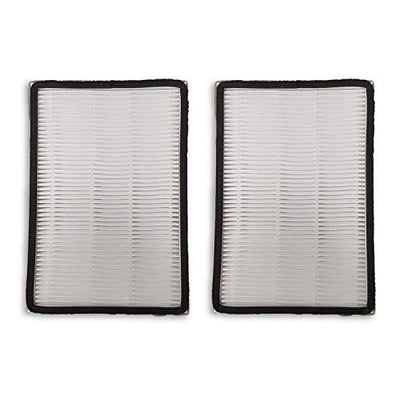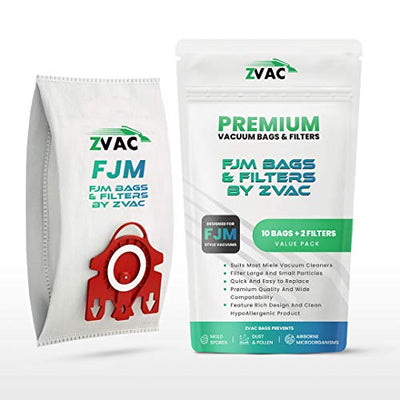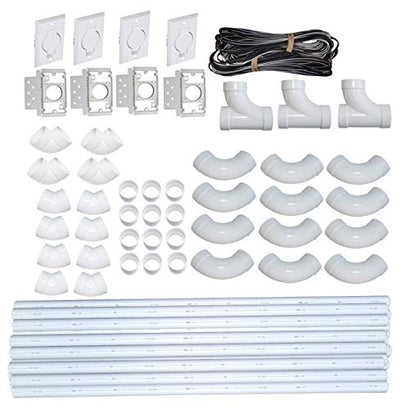ZVac Central Vacuum Pipe & Inlet Installation Kit with 100 Feet of Pipes & Wires Pre-Packaged with Wall Plates, Elbows, Brackets, Couplers & Sweep Ts

ZVac Central Vacuum Pipe & Inlet Installation Kit with 100 Feet of Pipes & Wires Pre-Packaged with Wall Plates, Elbows, Brackets, Couplers & Sweep Ts

Have a question or need a quote? Ask Our Experts
703-348-7304 | info@zvacuum.com
The ultimate all in one central vacuum rough-in kit so your home can have a central vac easily installed. If you're thinking about installing a built-in central vacuum cleaning system, then look no further! ZVac the makers of the best central vacuum cleaning systems on the market today bring you the all in one ZVac central vacuum installation kit that works with all new brands including: Aggresor, Air King, Airstream, AirVac, Allegro, Astrovac, Beam, Broan, Cana-Vac, Centralux, Cirrus, Dirt Devil, DrainVac, DuoVac, DustCare, Easy-Flo, Electrolux, Eureka, Frigidaire, Hayden, Honeywell, Hoover, Husky, Imperium, MD, Nadair, NuTone, PowerStar, Pullman-Holt, Riccar, Royal, Simplicity, Vacuflo, Vacumaid.
This kit has 100 feet of pipe and is enough for standard 4 central vac inlets. The Kit includes:
- (4) - Standard Inlet Faceplate
- (4) - Inlet Mounting Bracket
- (4) - Short 90 Elbow
- (12) - Sweep 90 Elbow
- (8) - 45 Degree Elbow
- (3) - Sweep T
- (12) - Stop Coupler
- (100) - Feet of Vacuum Pipe and Wire
- (100) - Feet of Vacuum Wire
This all in one central vacuum kit is enough to cover up to 2100 sqft of a home (actual coverage size will vary depending upon home layout and locations of central vacuum inlets). This rough in kit by ZVac does not require oversize shipping rates as most others do! You can always buy more inlets and fittings if needed. This ZVac install kit uses standard central vacuum piping, fittings and inlets that are to ASTM F2158 standard
NOTE: Never use schedule 40 pipe for installing a central vacuum system!
INSTALLING A CENTRAL VACUUM SYSTEM
|
|
|
|
|
|---|---|---|---|
Step 1: Plan Layout Installation.Each inlet you intend will boost the cost of a system and increase the probability of air leaks that reduce the suction of the system. Plan carefully, with this in mind, so that you can keep the number of inlets to a minimum. |
Step 2: Install Power Unit.Intend to place the power unit/collection canister away from living areas in the basement, a utility room, the garage, or a comparable location. Plan to place the unit on or near an exterior wall so that it is easy to route the exhaust line outdoors. Although some forms of central vacuum do not need to be exhausted outdoors, if you exhaust it, you can minimize the dust produced by the device. Don't put the device where temperatures, such as in a furnace room, small closet, or attic, can get hot. For a long life and proper operation, the power unit needs good ventilation. |
Step 3: Install Inlet Valves.On each floor, most houses need one or two inlets, centrally placed, so that every corner of every room is within the reach of the vacuum hose (typically about 30 feet). While inlets are best situated along the base of interior walls, if they are positioned away from foot traffic, they can be mounted on floors (all floor inlets should have metal covers). |
Step 4: Run PVC Piping.Tubing can run under the floor in a single-story house with a basement or crawl space and stub into walls for a short distance or serve floor inlets directly (by far the easiest method when retrofitting). If a house has restricted access under floors, such as a two-story house, tubing must be redirected elsewhere. Typical solutions are vertically running tubing through laundry chutes, behind shelves, exposed in wardrobe corners, or boxed in at one of the corners of a room. Another common alternative is horizontally running tubing in an attic and then lowering it down through a wall or into a cabinet or closet. Short, straight, and direct are the best runs. |
WHY INSTALL A CENTRAL VACUUM SYSTEM?
Central vacuums eliminate allergy symptoms and do an outstanding job of vacuuming, in addition to being handy.
Since the vacuum canister can be larger than a traditional household vacuum, without re-circulating such allergens into living spaces like a conventional, compact vacuum cleaner would, it can do a more efficient job of gathering dust, pollen, dander, and other airborne contaminants.
While central vacuums are bigger and more efficient than traditional vacuums, since the motor is remote, they are quieter.





















